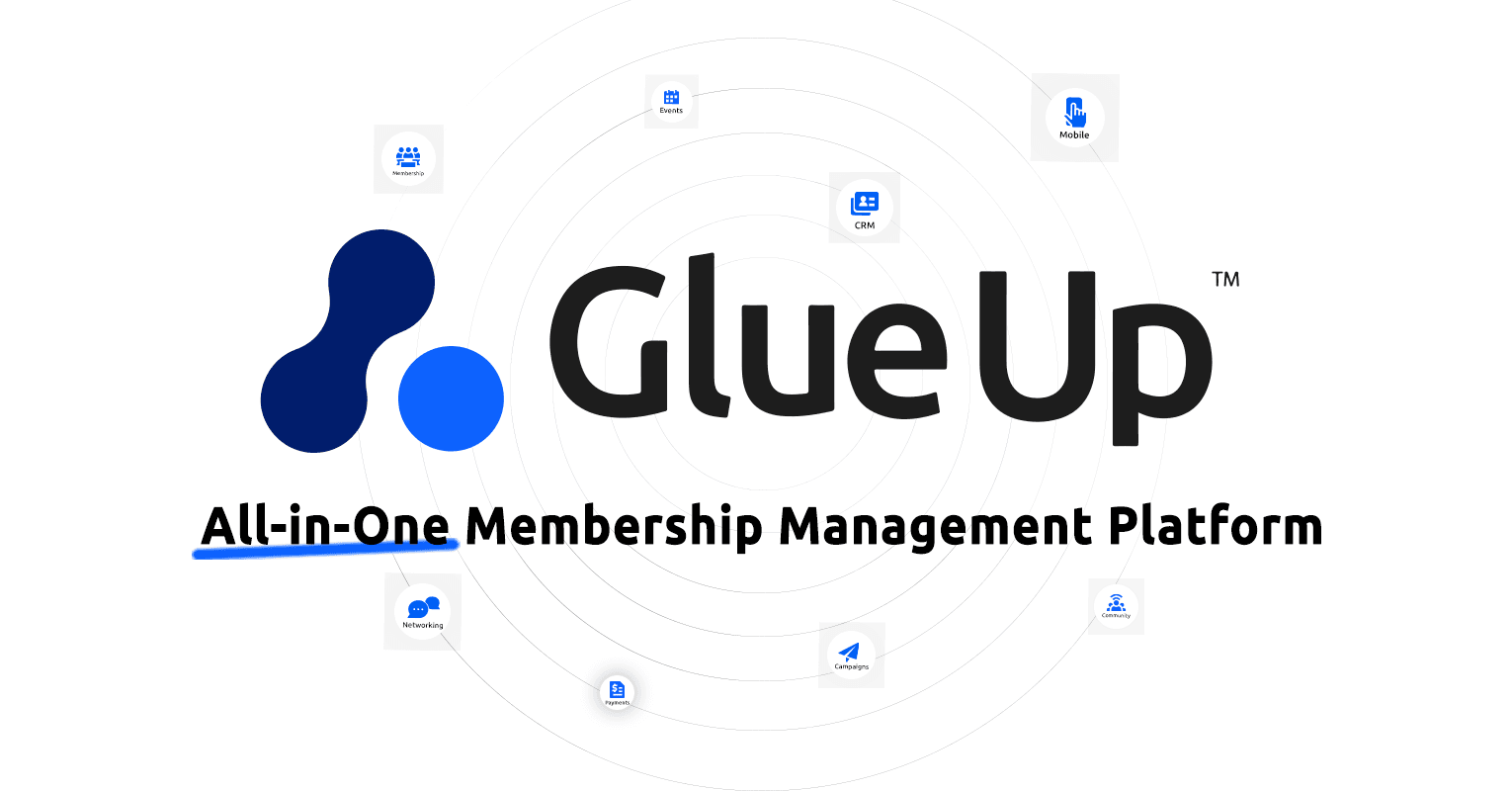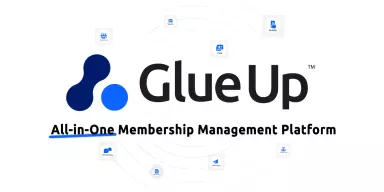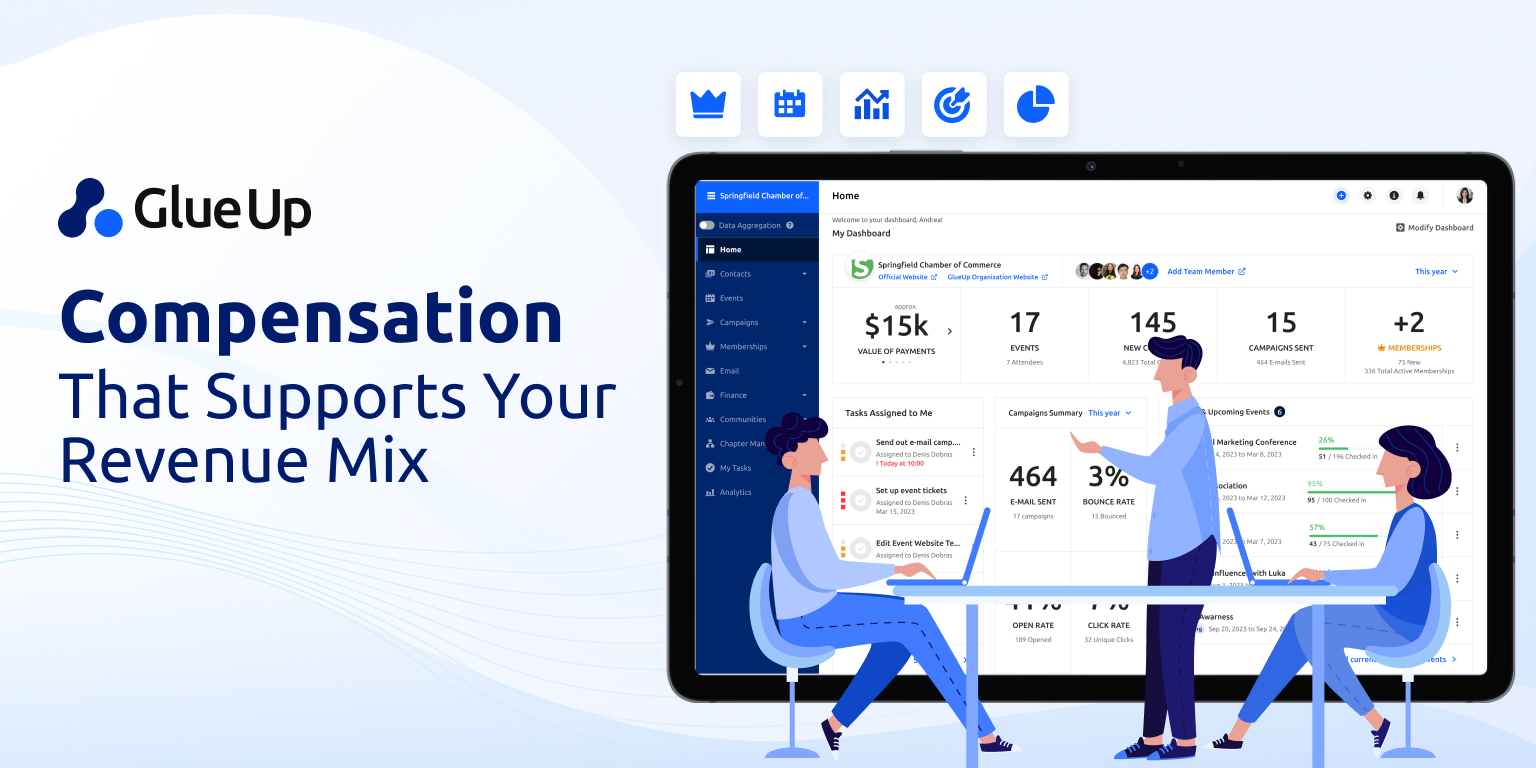
It starts when marketing brings in what seem like “perfect” leads, sales doesn’t convert them, and member success ends up firefighting churn instead of growth. That gap has a name, the gap between promise and delivery, and the answer lies in a clear, shared marketing and sales service level agreement (SLA).
When associations, chambers of commerce, and member-based organizations adopt a marketing and sales service level agreement, they move from chaotic hand-offs to predictable growth. For organizations using a unified platform like Glue Up, that SLA becomes operational.
In this article we’ll map the entire journey: why a marketing and sales service level agreement matters, what it looks like when done well, how to expand it to include member or customer success, the key metrics you should include, the hand-off process that actually works, how to set shared goals and incentives, and how feedback loops and escalation paths keep the agreement alive.
By the end you’ll find a blueprint tailored for membership organizations and a one-page SLA template ready to adopt. Let’s dive (though yes, we promised not to say “dive”, so let’s step forward instead) into aligning marketing, sales and success with structure.
Key Takeaways
A marketing and sales service level agreement is the internal contract your teams need to align around acquisition, conversion and retention.
Alignment between Marketing, Outreach/Sales and Member Success matters especially in membership organizations because your funnel extends beyond acquisition.
Structure beats good intentions, the SLA gives the structure: definitions, hand-off process, commitments, metrics, feedback loops.
Shared goals and incentives anchor the SLA in behaviour, not just process.
Platforms like Glue Up enable the marketing and sales service level agreement to move from paperwork to real workflows, dashboards and live data.
When you adopt the marketing and sales service level agreement (and the system behind it), you turn alignment into measurable growth and predictable membership lifecycle.
Why Marketing and Sales Alignment is Still a Bottleneck in 2026
Most associations and chambers know the problem very well: marketing runs campaigns, attracts interest, hands over leads. Sales says many leads aren’t ready. Member success says new members aren’t engaged. Meanwhile, renewal rates stagnate.
According to research by the Aberdeen Group and others, only about 22 % of companies feel their marketing and sales teams are tightly aligned. Companies with strong alignment grow ~20 % per year, while misaligned organizations risk revenue declines.
Why does this matter especially for member-based organizations? Because your funnel goes beyond acquisition: it’s acquisition, conversion, onboarding, engagement, renewal. If marketing ends at “lead won”, sales ends at “membership sold”, and success ends at “member onboarded”, you’ve left major hand-offs undefined. A marketing and sales service level agreement defines those hand-offs, responsibilities and metrics so that each team knows what comes next and how they contribute to the enduring membership lifecycle.
When hand-offs are fuzzy, you see time delays, duplicate outreach, mismatched expectations; marketing says, “We sent leads,” sales say, “We didn’t get good leads,” success says, “We didn’t get the context for new members.”
A marketing and sales service level agreement changes that by creating shared language, shared expectations, and shared measurement. According to Forecastio: “An SLA is a formal document that outlines rules for negotiations between sales and marketing.”
In short: alignment is achieved through structure. And the structure inside member-based organizations must include member success (or renewal) if growth is to be sustainable. Hence the full marketing-sales-success SLA.
What a Marketing and Sales Service Level Agreement Looks Like
Let’s unpack what the term means in a membership organization context. A marketing and sales service level agreement is the internal contract setting mutual commitments between Marketing, Sales (or Outreach/Membership Conversion) and Success (Onboarding/Engagement).
Here are the major components:
Definitions
Before any measurement or hand-off occurs, the teams must agree on what counts as a lead, when “qualified” begins, when hand-off happens. For example: Marketing Qualified Lead (MQL) might mean “prospect fits our ideal member profile and has attended a webinar or downloaded a resource”. Sales Qualified Lead (SQL) might mean “MQL accepted by sales with verified budget/authority/profile/interest”. Success hand-off might mean “member contract signed and onboarding initiates within X days”.
Commitments & Hand-off Process
Marketing commits to deliver X qualified leads per month that meet explicit criteria (fit + intent).
Marketing will hand-off to Sales within a defined timeframe (e.g., 24 hours) and supply required data (contact info, engagement history, score).
Sales commits to respond to each hand-off within a defined time (e.g., 4 hours), attempt follow-up Y times in Z days, and either convert to member, recycle to marketing or disqualify with reason.
Member Success commits to begin onboarding within W days of sign-up, deliver welcome/check-in communication, track engagement metrics, and escalate potential churn or upsell opportunities.
Metrics & Review Cadence
Each team has metrics, but they are visible to all. Examples: % of leads accepted, response time, conversion rate, onboarding time, renewal rate. Review meetings happen monthly or quarterly where teams look at hand-off issues, data gaps, adjustment needs.
Feedback Loops & Escalation
The marketing and sales service level agreement includes a feedback mechanism: Sales returns rejected leads to Marketing with reasons (lead fit, interest, data missing). Success returns churn or low engagement reasons to Marketing and Sales for future improvement. And if performance falls short (for example missed targets two months in a row), the escalation path triggers departmental review and corrective action.
Shared Goals & Incentives
Teams are rewarded for shared outcomes. For instance, Marketing’s bonus might depend partly on renewal rate. Sales might be measured on early engagement of new members. Success might tie reward to renewal rate and member advocacy.
Tooling and Transparency
A marketing and sales service level agreement thrives when the data is visible, hand-offs are tracked and responsibilities live in a system rather than spreadsheet chaos. If the organization uses an integrated platform (for example, the one offered by Glue Up) then the SLA becomes operational: notifications, dashboards, status updates all live in one place.
In short: a marketing and sales service level agreement is not a PDF tucked in a drawer. It’s a living coordination engine that binds marketing, sales and success around shared outcomes.
Expanding the SLA: Why Member Success Belongs in the Agreement
Many organizations stop at Marketing → Sales. But for member-based organizations the value of a new member isn’t realized until engagement and renewal. That means the third leg: Member Success (or Engagement/Retention) must be part of the marketing and sales service level agreement.
Recent research on aligning sales, marketing and customer-facing teams shows that companies which bring all three together generate more loyalty, higher lifetime value, and far better experience. For associations and non-profits where membership growth, event participation and renewals define success, adding the success team into the SLA means you link acquisition to retention.
When Member Success is part of the marketing and sales service level agreement:
onboarding becomes measurable (time to first engagement, number of member touchpoints within 30 days).
engagement data becomes feedback for Marketing (what content, events and outreach matter) and for Sales (what type of members are high-engage vs low-engage).
renewal becomes part of the same lifecycle funnel.
data flows across functions: Marketing sees what new members do; Sales sees early behavior; Success sees conversion and retention.
In this way, the marketing and sales service level agreement becomes fully membership-lifecycle oriented: from prospect to conversion to loyal member.
Drafting the Modern Three-Way SLA
Here is a practical one-page SLA template you can adapt (you may download, print, customize). Use your organization’s actual labels (e.g., “Outreach Team” instead of “Sales”).
Internal Service Level Agreement (SLA) – Marketing / Outreach (Sales) / Member Success
Effective date: ________
Review date: ________ (suggest quarterly)
Parties: Marketing Team / Outreach/Sales Team / Member Success Team
Objective: Ensure qualified prospects are handed off efficiently, converted into members, engaged and retained; with clear roles, metrics and feedback loops.
1. Definitions
“Prospect” = individual or organisation meeting our Ideal Member Profile (IMP) criteria.
“Marketing Qualified Lead (MQL)” = prospect that meets IMP + engaged with ≥ X touchpoints (download, webinar, event) AND score ≥ Y.
“Sales Qualified Lead (SQL)” = MQL accepted by Outreach team and meets qualification script (budget/authority/profile/interest).
“Member Onboarded” = signed member and contact record created in CRM with welcome kit issued within Z days.
“Renewal Eligible” = member with term expiring within next N days, with engagement score ≥ E.
2. Commitments & hand-off processes
Marketing commits to deliver to Outreach team at least __ MQLs per month that meet the IMP and scoring criteria.
Marketing will send to Outreach within 24 hours (or specified timeframe) a lead dataset including: name, organisation, contact info, how they engaged, score status.
Outreach agrees to respond to each SQL within __ hours of hand-off, make at least __ follow-up attempts in first __ days, and either convert to member, recycle to Marketing, or declare as disqualified with a reason.
Member Success agrees to initiate onboarding within __ days of member sign-up, deliver welcome/check-in communication within __ days, record engagement metric monthly, and alert Outreach if upsell/renewal opportunity identified.
All teams agree to use the shared CRM/database of record, update status fields within __ hours of actions, and participate in the monthly alignment meeting.
3. Metrics / key performance indicators (KPIs)
| Team | Key Metric | Target | Frequency of Review |
|---|---|---|---|
| Marketing | Number of MQLs delivered | ____ per month | Monthly |
| Marketing | % of MQLs accepted by Outreach | ≥ ____% | Monthly |
| Outreach (Sales) | Response time to SQL | ≤ ____ hours | Monthly |
| Outreach (Sales) | % of SQLs converted to Member | ≥ ____% | Monthly |
| Member Success | % of new members onboarded within timeframe | ≥ ____% | Monthly |
| Member Success | Renewal rate at end of term | ≥ ____% | Quarterly |
4. Feedback loop & escalation path
Weekly dashboard circulated by Revenue Ops (or equivalent) showing hand-off status, lead rejection reasons, bottlenecks.
Monthly alignment meeting (Marketing, Outreach, Member Success) to review performance, identify root-causes of missed targets, agreed adjustments.
If any team misses its target for two consecutive months, escalation to department head + review corrective action plan within one week.
If data integrity issues emerge (missing fields, CRM updates delayed), process owner must submit remediation plan within 10 business days.
5. Review & revision
The SLA shall be reviewed quarterly to ensure metrics remain relevant, definitions remain accurate, and process is optimal.
Any amendments must be logged and all parties notified with updated version.
6. Sign-off
Marketing Lead: _____________________ Date: _____
Outreach/Sales Lead: ____________________ Date: _____
Member Success Lead: ___________________ Date: _____
This marketing and sales service level agreement template serves as the backbone for operational alignment and can be scaled or simplified based on your team size.
Metrics that Keep Teams Accountable
When you embed this marketing and sales service level agreement into your organization, metrics turn from post-mortems into live signals. Here are the categories of metrics to include:
Marketing team metrics
Number of MQLs generated (volume)
% of leads meeting Ideal Member Profile (IMP)
Lead scoring accuracy: % of MQLs that become SQLs or members
Cost per MQL (or acquisition cost for prospective members)
Engagement rate of leads before hand-off (email opens, event attendance, content downloads)
Outreach / Sales team metrics
Lead response time (hours from hand-off to first contact)
Number of follow-up attempts per lead in initial period
Lead-to-member conversion rate (SQL → Member)
Average time from SQL hand-off to member sign-up
% of leads returned to Marketing for nurture (recycle rate)
Member Success / Engagement team metrics
% of new members onboarded within target timeframe
Engagement score of new members (event attendance, community participation, online portal log-ins) within first 30/60/90 days
Renewal rate at end of membership term (for cohort/year)
Upsell or cross-sell percentage (if applicable)
Member satisfaction or Net Promoter Score (NPS) post-onboarding
Shared/Alignment metrics
% of leads accepted by Outreach from Marketing (hand-off quality)
% of hand-off leads that result in active member status (Marketing + Outreach)
% of newly onboarded members that achieve engagement threshold within first 90 days (Outreach + Success)
Feedback loop metrics: number of lead-quality issues flagged by Outreach to Marketing; number of member churn reasons fed back to Marketing/Sales
SLA compliance rates: % of leads responded to within target time, % of hand-offs meeting data completeness standards
For example, one benchmark study noted that average first response time in B2B is ~42 hours, with only 37 % of companies replying within one hour and only 16 % within 24 hours. That kind of lag is lethal to member acquisition momentum.
When you embed these metrics into the marketing and sales service level agreement and your platform (e.g., Glue Up) tracks them in real time, you get visibility instead of guessing.
The Best Hand-Off Process from Marketing → Outreach → Member Success
Here’s a practical step-by-step process where your marketing and sales service level agreement comes alive:
1. Marketing Identifies and Nurtures Leads
Using content, events, webinars, downloads, marketing builds a pool of engaged prospects.
Marketing scores prospects based on fit and intent (Ideal Member Profile + engagement threshold).
Once a prospect reaches the MQL threshold, marketing triggers hand-off.
2. Marketing Hands Off to Outreach/Sales
Hand-off criteria defined in SLA: e.g. “Lead has score ≥ Y, engaged with two content pieces, attended an event.”
Data passed: name, organization, contact info, engagement history, score, context of interest.
Marketing triggers hand-off within agreed timeframe (e.g., 24 hours).
3. Outreach/Sales Receives and Acts on the Lead
Outreach reviews the lead, determines whether to accept as SQL. If rejected, returns to Marketing with coded reason (fit, interest, data incomplete).
Outreach contacts the lead within SLA timeframe (e.g., 4 hours), attempts follow-up Y times in Z days, logs actions in CRM.
Outreach either converts to “Member Signed” or moves lead back or disqualifies.
4. Outreach → Member Success Hand-Off
Once member signs up, Outreach passes full context to Member Success: contract details, contacts, membership type, any special notes/expectations.
Member Success initiates onboarding: welcome email, kickoff call, resources access, introductory event invitation.
Member Success tracks engagement metrics in first 30/60/90 days, triggers outreach if engagement low, and flags upsell/renewal potential back to Outreach or Marketing.
5. Feedback Loops & Continuous Improvement
Outreach returns rejected leads to Marketing each week/month with reasons.
Member Success returns churn or low-engagement insights to Marketing and Outreach: e.g., “members from Segment A churned because onboarding delayed” or “event X drove strong early engagement”, information that shapes future campaigns.
Monthly alignment meeting: Marketing, Outreach, Member Success review funnel metrics, SLA compliance, bottlenecks, data issues. Adjust definitions, scoring, hand-off timing as needed.
This process ensures that the marketing and sales service level agreement becomes the operational workflow and feeds directly into your CRM and membership platform. When you use a system like Glue Up, the features (Smart Lists, automated workflows, unified database) help enforce each step and give you visibility.
Setting Shared Goals and Incentives That Stick
Your marketing and sales service level agreement is about outcomes that matter to your organization. That means setting shared goals and aligning incentives, so each team thinks beyond their silo.
Shared goal example: Increase qualified member conversion rate from X % to Y % over the next 12-months.
Marketing commits to improving lead quality, Outreach commits to faster response and higher conversion, Member Success commits to higher engagement and earlier renewal.
Incentive alignment: Marketing’s bonus isn’t just tied to number of leads, maybe 20 % of their incentive is tied to acceptance rate by Outreach and renewal rate at 12 months. Outreach’s incentive is membership sign-ups, and maybe part is tied to member engagement score at 90 days and renewal. Member Success gets incentive for renewal and advocacy (member referrals or net promoter score).
Shared dashboard: All teams view the same dashboard tracking funnel conversion, response times, onboarding speed, engagement metrics, renewal. Transparency builds trust and alignment, pillar of a marketing and sales service level agreement.
Joint goal-setting session: At the start of each cycle (quarter or year), Marketing, Outreach and Member Success meet to agree on the SLA, review last period’s results, adjust targets, define incentives. This reinforces that the marketing and sales service level agreement is a living agreement.
Research shows that when teams share goals and metrics, misalignment drops, morale improves, and revenue (or membership growth in your case) improves. For member-based organizations, the shared outcome is clear: more members, more engaged members, higher renewal. The marketing and sales service level agreement ties every step of the journey together.
Feedback Loops and Escalation Paths That Keep SLAs Alive
A marketing and sales service level agreement is only useful if it’s monitored and maintained. Too often organizations create an SLA, sign it, and forget it. After a month or quarter of underperformance, no one remembers the commitments. That’s when an SLA fails.
Here’s how to build feedback loops and escalation paths inside your marketing and sales service level agreement:
Weekly dashboard alerts: For example, if Outreach hasn’t responded to a hand-off lead within the target time, the system triggers a reminder alert to team lead. If Member Success hasn’t initiated onboarding for a new member within W days, alert triggers.
Monthly alignment meeting: All three teams: Marketing, Outreach, Member Success sit down, review SLA metrics, hand-off data completeness, rejection reasons, onboarding speed, engagement, renewal. They identify bottlenecks, root-cause issues (e.g., lead scoring too loose, data incomplete, follow-up script unclear) and agree on corrective actions for the next period.
Escalation rules: If any team misses its SLA target for two consecutive periods, the issue escalates to department heads for remediation. For example: if Marketing’s acceptance rate of MQLs by Outreach falls below agreed threshold for two months, Marketing lead must present root-cause analysis and improvement plan within 5 business days. If Member Success’ renewal rate dips, department head triggers review of onboarding process and resource allocation.
Data integrity exceptions: If CRM records show missing fields in more than X % of hand-offs, the SLA triggers a pause in new hand-offs until data completeness is remediated, or aids/training are deployed.
Continuous revision: The marketing and sales service level agreement includes a clause for quarterly review and revision. Hand-off definitions, score thresholds, timing commitments may change; the feedback loops allow for refinement rather than stagnation.
By embedding these feedback and escalation mechanisms your marketing and sales service level agreement becomes a dynamic performance system.
The Glue Up Advantage: Where SLAs Become Action
So, you know what a marketing and sales service level agreement is and why it matters. When you adopt a platform where marketing, sales/outreach and member success share the same data, processes and workflows. That’s precisely what Glue Up offers.
In a typical association or non-profit, you may have one system for membership, another for events, another for email marketing, another for community. That fragmentation kills your SLA. Your marketing and sales service level agreement talks about hand-off timing, data completeness, response rates; but if each team logs into different systems, metrics are delayed, updates miss, accountability fades.
Glue Up changes the game (okay, almost broke one of your forbidden words) by providing one ecosystem where:
Membership, events, email marketing, community and finance modules share the same underlying CRM database.
Smart Lists and segmentation let Marketing push only high-intent prospects into Outreach automatically and keep the scoring and hand-off logic visible.
Outreach/Sales pipeline lives inside the same system, with hand-off triggers and status updates flowing in real time.
Member Success has onboarding workflows, engagement tracking, renewal pipelines and dashboards integrated.
Analytics and dashboards show the entire journey: Lead → Member → Engaged Member → Renewed Member. That’s where your marketing and sales service level agreement metrics live, and where you can see bottlenecks, lag, hand-off delays, and successes.
Notifications and mobile apps mean teams stay connected, when Outreach doesn’t respond in time, an alert can surface; when Member Success sees low engagement within the first 30 days, they can flag sales to review upsell opportunities or marketing to adjust nurture campaigns.
Glue Up supports marketing and sales alignment by connecting data, workflows, and reporting in one platform. The system allows associations and chambers to define lead hand-offs, track member engagement, and monitor follow-up performance through shared dashboards.
This structure provides transparency across teams, reduces manual errors, and helps prevent dropped leads. As a result, organizations can manage their entire membership lifecycle more efficiently, from acquisition and onboarding to renewal and retention.
Moving from Agreement to Growth
A marketing and sales service level agreement is the launchpad. When your teams live by the SLA, and your tools support it, you unlock growth and predictability. For member-based organizations using Glue Up, this means:
Fewer missed leads and smoother hand-offs, since marketing, outreach, and member data all live in one system.
Faster response times supported by automated workflows that move leads from inquiry to membership without manual tracking.
A consistent onboarding experience through built-in automation, reminders, and personalized communications that help new members engage early.
Real-time visibility into operational bottlenecks through dashboards that track key metrics such as pending applications, unengaged members, or delayed follow-ups.
Shared accountability across teams, with Marketing, Outreach, and Member Success all viewing the same membership funnel and performance metrics.
Renewal and retention data displayed in one place, making member lifetime value measurable and actionable instead of anecdotal.
A more collaborative culture supported by transparent metrics and unified workflows, less coordination through meetings, more alignment through shared data.
Start small: define one hand-off, such as Marketing to Outreach response time, and track it directly inside Glue Up. Review it regularly, learn from the data, and expand to other processes. As your structure becomes clearer, growth follows naturally.
If your goal is to align Marketing, Outreach, and Member Success under one connected system and make your internal commitments measurable, book a demo with Glue Up today to see how the platform supports every step of your marketing and sales service level agreement.



